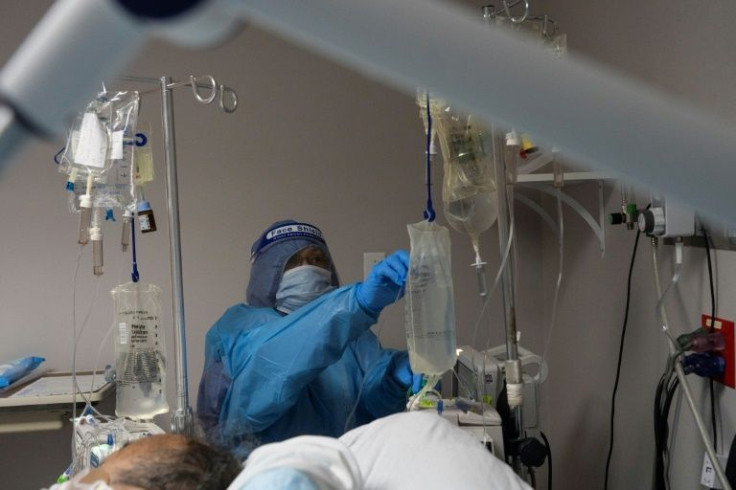Alaska's COVID-19 Treatment Supply Runs Low Amid Case Surge And At-Risk Prioritization
KEY POINTS
- Some monoclonal antibody treatments are not showing much promise in fighting the Omicron variant
- The statewide alert level is high at 1771.4 per 100,000 people: Alaska Department of Health and Social Services
- The supply of a new oral antiviral treatment is low, says state pharmacist
Alaska is experiencing a low supply of COVID-19 treatments that are expected to be used only among severely at-risk individuals as the state grapples with a surge in new coronavirus cases.
On Friday, the state reported more than 5,500 new COVID-19 cases over the previous two days, breaking the Monday and Tuesday record of more than 4,500 new cases in two days, the Anchorage Daily News reported. Hospitalizations linked to the virus also increased slightly at 87 Friday. The previous number of hospitalizations, recorded Wednesday, was 80. However, the bigger problem is the low supply of COVID-19 treatments for Alaskans.
Only one type of monoclonal antibody treatment has been shown to be effective against the omicron variant of COVID-19, which means Alaskans could have a hard time finding treatment if they get sick in the near future. https://t.co/tePenC9Od7 pic.twitter.com/bMw0EDao1S
— Alaska Public Media News (@AKpublicnews) January 14, 2022
State pharmacist Coleman Cutchins said that the supply of a new oral antiviral treatment against the disease is low. Furthermore, monoclonal antibody treatments, which were proven to be crucial in treating COVID-19 during the early stages, have reportedly not shown as much promise in fighting against the highly contagious Omicron variant.
Cutchins said that since the new oral treatment has just been authorized for use against the virus and there is an increasing demand for the said treatment amid rising COVID-19 cases in the state, its supply has become scarce.
On the other hand, production of the oral medication is faster compared to monoclonal antibodies, which could hopefully change the treatment’s scarcity level in the long run, he said.
Some medical facilities have started rationing COVID-19 treatments as there is only one monoclonal antibody treatment that has been proven effective against Omicron. But the supply is short and some experts noted there may not be enough to reach infected Alaskans.
Jeannie Monk, senior vice president of the Alaska State Hospital and Nursing Home Association, said that “right now, the COVID therapeutics are a scarce resource, and we anticipate that that will continue to be the case in the foreseeable future.”
The Alaska Department of Health and Social Services said Saturday that the “statewide alert level is high at 1771.4 per 100,000” people.
COVID-19 UPDATE 1/14/21
— Alaska Department of Health (@Alaska_DOH) January 15, 2022
The statewide alert level is high at 1771.4 per 100,000 and 58% of Alaskans (5+) have been fully vaccinated. 2 Alaska resident deaths & 5508 new people identified in AK yesterday.
5351 resident cases in: Anchorage (2,638), Fairbanks (454),Eagle River (249)
Last week, some hospitals in Alaska reported significant absences among staff amid increasing hospitalizations due to COVID-19. As part of the efforts to prevent further transmissions among staff, patients, and visitors, the Providence Alaska Medical Center implemented its strictest visitation policies yet, the Alaska Public Media reported. Visitation is now only allowed for one family member in most cases, while most patients in the hospital’s COVID unit will not be allowed to have visitors until further notice.
According to data from the Alaska DHSS, 58% of Alaskans aged 5 and older have been fully vaccinated, while about 63.4% of Alaskans in the same age range have received at least one dose of the vaccine.
The Juneau Region logged the highest number of vaccinated eligible individuals at 78.2%, with YK-Delta Region following closely at 74.2%.
Since the pandemic started, Alaska has recorded a total of 178,618 confirmed COVID-19 cases and 987 deaths linked to the disease.

© Copyright IBTimes 2024. All rights reserved.












